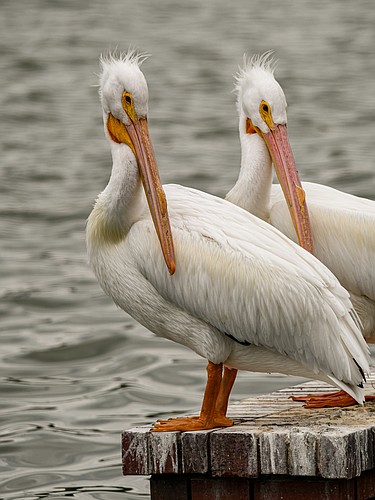- April 19, 2024
-
-
Loading

Loading

Late October brings cooler weather up north, and a mass migration of those seeking warmer climes here in Florida. With wingspans up to 9.5 feet, American white pelicans are definitely among the largest, and the most spectacular, of our snowbirds.
They are two to three times larger than Florida's brown pelicans, which live here year-round. And, as their name suggests, white pelicans are mostly white with a yellow-orange bill, pouch, legs, and feet. Their flight feathers have black on the underside and tips of the wings, which is easily visible in flight.
Unlike brown pelicans, which plunge-dive to forage for fish, while pelicans feed on the surface of the water. In an impressive display of teamwork, pods of white pelicans will often coordinate their swimming to form semicircles on the water surface. They herd the fish closer to the banks, where they can more easily use their massive pouches to scoop prey out of the water.
An American white pelican is able to hold an three gallons of water in its pouch. Frozen lakes are not conducive to their foraging style, which is why thousands of these massive birds migrate south from the mountains and plains of the U.S. Northwest before the first frost each year.
American white pelican colonies are vulnerable to disturbance and habitat loss. These large birds used to be shot for sport or because humans considered them competition for fish.
American white pelicans, unlike brown pelicans, are quite reclusive, and will usually choose isolated areas over open waters. However, pelicans of both species are extremely vulnerable to death and disfigurement resulting from entanglement in monofilament fishing line.
Save our Seabirds is a non-profit organization whose mission is to rescue and rehabilitate sick and injured birds, releasing as many as they can, while educating our community about avoiding injuries and preserving habitats.